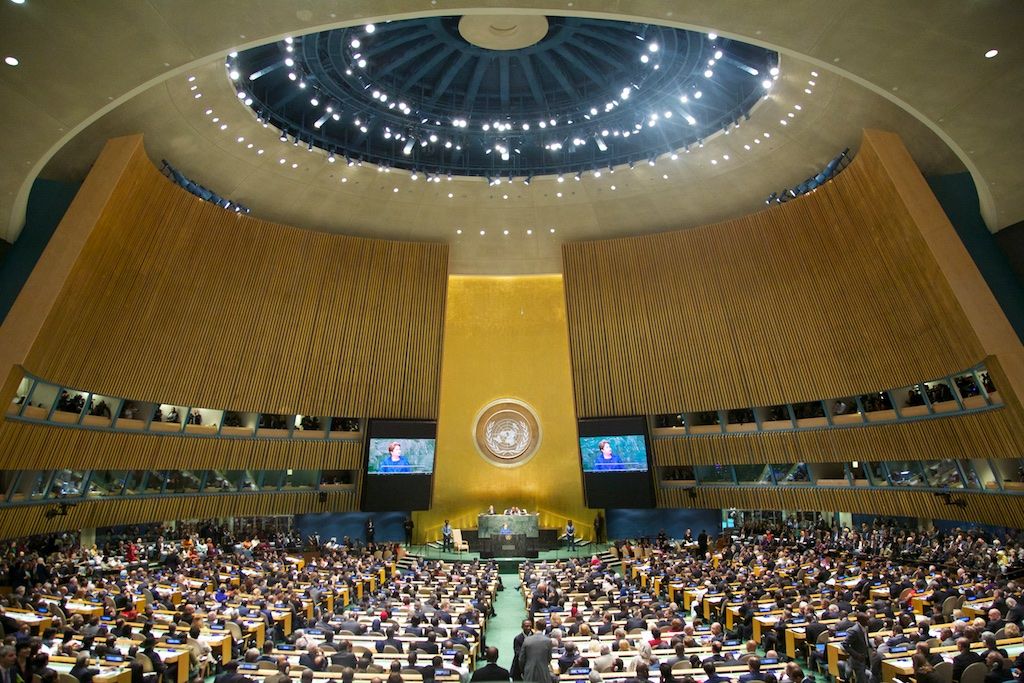This past December, President-elect Trump tweeted that “the United Nations has such great potential but right now it is just a club for people to get together, talk and have a good time. So sad!” While it is unclear if his opinion has changed, President Trump heads to New York this weekend to attend the 72nd annual opening of the United Nations General Assembly. Like his predecessor, Trump, accompanied by his secretary of state and ambassador to the United Nations, will speak at the United Nations and meet with a number of foreign leaders. That much is par for the course. But observers will be closely watching other dynamics, both internally within the administration and externally between Trump and his foreign counterparts.
It’s been tradition for the American president to use this venue to speak to issues of global concern, before participating in several high visibility meetings with counterparts and engage in the diplomatic equivalent of speed-dating. While Trump plans to follow some of these established precedents, in a break from tradition, the president is staying more than an hour away at his golf course in Bedminster, New Jersey, and requiring foreign counterparts to travel there to meet with him.
Of far greater importance to those in attendance will be what Trump says in his remarks on Monday, September 19. While newly installed White House chief-of-staff John Kelly seems to have brought a modicum of process and discipline to the White House, Trump’s statement at the UN will present the first significant indicator, post-Charlottesville, of which version of himself Trump presents to the world. A key question is whether Trump will decide to build off the collegial tone he struck with UN ambassadors at the White House in April, or whether he will instead use the setting to berate foreign leaders, threaten to further cut US funding for the United Nations, and promote his America First agenda. In addition to UN reform, the White House has said that it will prioritise North Korea’s nuclear threat, the ongoing Syrian crisis, Iranian activities in the Middle East, terrorism, worldwide famine, and the plight of refugees. How Trump frames and addresses these common concerns will be as of much interest as what he actually says about them.
The White House has said that it will prioritise North Korea’s nuclear threat, the ongoing Syrian crisis, Iranian activities in the Middle East, terrorism, worldwide famine, and the plight of refugees.
For Washington observers, what makes next week particularly interesting are the bureaucratic and political dynamics. Trump will head to New York lacking the normal American diplomatic entourage, instead bringing with him, a “toe-print, not a footprint”, according to Secretary of State Rex Tillerson. Partially due to a view in the White House that the American presence at UNGA had become excessive, and partially because the administration has filled only a small number of senior State Department positions, the American presence at the General Assembly will be leaner than in past years. The net result will be fewer direct contacts with foreign counterparts at a time of heightened uncertainty about the administration’s direction on key foreign policy issues.
Another dynamic worth studying will be the dynamics on Trump’s team. As Elsina Wainwright argued in her USSC Alliance Brief, US Ambassador to the United Nations Nikki Haley has consistently staked out a more traditionally hawkish position than Trump – calling for a sterner line with Moscow, advocating Bashar Assad’s ouster in Syria, and championing human rights. She will almost certainly not contradict him in New York, but the tension between their views will be on display. As perhaps will be the contrast between Haley and Rex Tillerson. With rumours circulating that Tillerson may be on his way out, possibly to be replaced by Haley, it will be particularly interesting to see which cabinet member attends which meetings.
Finally, the multilateral fora has proven to be challenging for Trump in the past. The last two times Trump shared the stage with his counterparts was at the NATO summit in May, in which coverage was dominated by Trump’s refusal to affirm NATO Article 5 and his shove of the Montenegran prime minister, and the G20 Summit in July, which became a story about Trump’s undisclosed tet-a-tet with Vladimir Putin.
Ultimately, what is likely to be lost in the midst of the focus on the political dynamics and theatre of the week will be the issues that require the serious attention of the United Nations member states.





.jpg?rect=0,54,1024,576&w=320&h=180&fit=min&auto=format)
